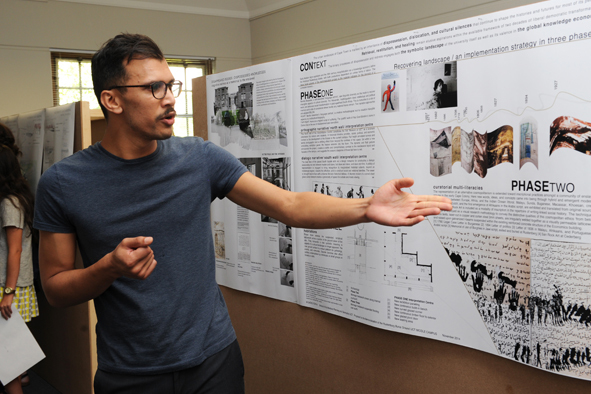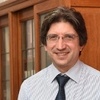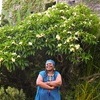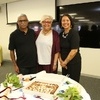Slave memorial to recover histories of the dispossessed
04 December 2014 | Story by Newsroom
At the culmination of a series of events in memory of the slaves buried on what-is-now UCT's middle campus, the winning design for a memorial was revealed at UCT's commemoration of the end of slavery at the Cape on 1 December 1834.
For Sadiq Toffa, a doctoral student in the School of Architecture, Planning and Geomatics and winner of the design competition to commemorate these slaves, the Rustenburg memorial – named after the estate on which part of UCT is now built – should be the beginning of a museum of the university.
Toffa wants this museum to contain a visual archive that represents "the deeper history of UCT, not only as a university, but also as a slave estate".
The memorial proposed will form the basis for what will ultimately be constructed on the site next to the School of Economics building, where the remains of a boundary wall that belonged to the slave burial ground was found in 2007. Currently a glass pane protects a portion of this boundary wall in the garden between All Africa House and the economics building.
Toffa was among four other finalists shortlisted from 29 entries submitted mostly by architecture and arts students.
Deputy Vice-Chancellor Professor Crain Soudien believes it to be a tragedy that "the archival record is almost silent" on what happened at the site. Toffa hopes his proposal will "bring into material life these historical silences, the neglected and marginalised aspects of our history".
Other than a visual archive, Toffa also proposed that a montage of metal work be constructed in the garden, which would serve as a meeting space. "The space outside becomes a celebratory, extraordinary kind of space for memorial events and activities. There will be discreet benches and the garden will become a space for individual reflection and study – a space for multiple aspects of engagement as a way of thinking of multiple histories."
Language instrumental in re-imagining the future
Another aspect of his proposal involves dialogue between contested versions of history, between what he terms the 'master' and 'slave' classes. "The aim of this narrative would be to bring material embodiment to communities, where we don't know the names or much about their lives. The project seeks to uncover the incredible richness and cultural diversity of the colonial Cape, where a multitude of languages were spoken by a diverse array of communities."
For Toffa, language is much more than a means of communication: "It is a vehicle to convey ideas and different ways of thinking as well as different ways of being in the world." Language employed in this way, he believes, holds the answers to building a future that breaks with the past, a future in which the mistakes of the past are not repeated.
'Slaves are more than labour units of production'
Mogamat "Kammie" Kamedien, who represented the larger Cape Town community at the Emancipation Day commemorations, commended all five teams for "looking at slaves as more than just labour units of production. You all looked at South African slaves as people who take charge of their lives and how they respond to a particular environment and situation. You have all done very solid research and your interpretation recognises the dignity of the labourers of the period."
According to Professor of Law Jaco Barnard-Naudé, the burial site points to one of "the most enduring, most overlooked and least transformed legacies of apartheid – the legacy of apartheid as a spatial injustice".
"Cape Town remains a city segregated along the colour and class lines, established first by different eras of colonial rule and entrenched further during apartheid. The post-apartheid capitulation to the powers of neo-liberal capitalism has meant that man and property restitution and other forms of restitutions have been sacrificed in the name of reconciliation and nation-building. As a result, the cityscape increasingly reflects the forms of land dispossession and socio-economic exclusion." stated.
Soudien argued that the participating students – and by extension the UCT community – are involved in the "process of liberating our language and imagination to think about what a post-apartheid environment might be all about. That UCT is part of that post-apartheid re-imagination is very important," he concluded.
Story by Abigail Calata. Photo by Michael Hammond.
 This work is licensed under a Creative Commons Attribution-NoDerivatives 4.0 International License.
This work is licensed under a Creative Commons Attribution-NoDerivatives 4.0 International License.
Please view the republishing articles page for more information.










